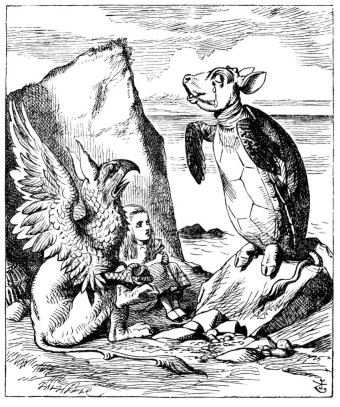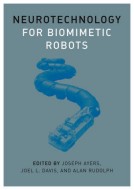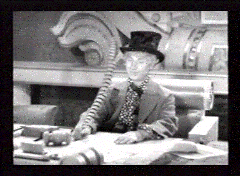



 Associate Professor of Neuroscience
Associate Professor of Neuroscience
Go
to Currie Neuroscience Faculty profile
EDUCATION:
BA, Biology, University
of California, San Diego; La Jolla, CA.
M.S., Biology, Northeastern
University Marine Science Center, Nahant, MA.
Ph.D., Animal Physiology, University
of California, Davis; Davis, CA.
Postdoctoral training, Washington
University; St. Louis, MO.
RESEARCH SUMMARY:
Coordinated rhythmic movements (e.g., breathing,
walking, swimming, scratching) are characterized by precise temporal sequences
of muscle activation referred to as motor patterns or motor programs.
Motor pattern sequences are produced by rhythmically active networks of
nerve cells called central pattern generators (CPGs) in the brain and spinal
cord. Most of my work, funded by an NSF
grant, examines cellular- and circuit-level mechanisms used by spinal cord
CPG networks to generate rhythmic swimming and scratching movements in
the turtle hindlimb. Both whole-animal (in situ) and isolated spinal
cord (in vitro) preparations are used in these studies. The understanding
of CPG mechanisms in biological neural networks is relevant to the understanding
of human movement disorders and the design of biologically based ("biomimetic")
control systems in robotics.
We recorded the first fictive swimming motor patterns in turtles that were immobilized by a neuromuscular blocking agent (Juranek and Currie, 2000). "Fictive" motor patterns are recorded directly from muscle nerves, without actual movement. We elicit fictive swim activity by electrically stimulating descending fiber tracts in a specific region of the spinal cord. Brief stimulation of a scratch reflex during ongoing fictive swimming can interrupt and permanently reset the rhythm of the swim. This shows that there are strong central interactions between swim and scratch neural networks, and suggests that they may share key timing elements. I have begun investigating pre-motor command systems in the turtle brainstem that activate locomotor CPGs in the spinal cord.

A number of years ago, I collaborated with Dr.
Joseph Ayers and several engineers on a project to design and build
biomimetic
underwater robots for use in mine detection. The ultimate goal of this
work, funded by DARPA-CBS,
is to use finite-state-machine controllers, organized into command, coordinating
and CPG systems, to control (1) an 8-legged ambulatory robot based on the
lobster, and (2) an undulatory swimming robot based on the lamprey
(an eel-like lower vertebrate). My part in this project was to assist in
the "reverse engineering" of lamprey swimming, turning, and orientation
behaviors from the animal to the robot. Shape-memory-alloy (nitinol,
or Flexinol™) wires, which shorten
by about 5% in response to a train of current pulses, are used as "artificial
muscle" to produce robotic movement. This work is described in the
new book "Neurotechnology
for Biomimetic Robots", published by MIT Press.

Click on image to see movie (https://youtu.be/zNCqh1ew6K4).
Soft rubber lamprey model, fabricated for the Biomimetic
Underwater Robot Program.
The model swam via passively conducted undulatory waves while suspended beneath a frictionless air track.
Undulatory oscillations were
generated by a DC motor via a thin rod, inserted
into the model just behind the "head"
and driven by a sine wave from a function
generator. By manually adjusting the sine wave's DC offset,
the model could be made to turn right or left.
Publications: See faculty webpage
CLICK ON POSTER TO VIEW ENLARGEABLE PDF
CLICK ON POSTER TO VIEW ENLARGEABLE PDF


UCR Links
UC Riverside Home
Page
UC Riverside
Neuroscience Graduate Program
UC
Riverside Neuroscience Graduate Program Faculty
Scott
Currie's Neuroscience Faculty Page
People Links
Joseph
Ayers
Ari
Berkowitz
Paul
S.G. Stein
Professional Organizations
American Physiological
Society (APS)
International
Brain Research Organization (IBRO)
International
Society for Neuroethology
Society
for the Neural Control of Movement
Society for Neuroscience
Science Education
BrainFacts.org
History
Donald Wilson
(1932-1970)
Tony Sale's Virtual Bletchley Park
Darwin on-line (University of Cambridge)
Poetry
William Butler Yeats - The Wind Among the Reeds
William Butler Yeats - Song of the Wandering Aengus
Lewis Carroll - A-sitting on a gate
The
Oxford Shakespeare - poetry
Federico García
Lorca
BBC Outloud - Poets performing their own works
Gregory Corso - My hands are a city
Gregory Corso - Last night I drove a car
The Song of Quoodle - G.K. Chesterton
Rainer Maria Rilke - The Second Duino Elegy
The
Song of Songs
Wislawsa
Szymborska - Monologue of a Dog
Neuroscientist Poets
Sir Charles Sherrington - The Assaying of Brabantius (1925)
Warren S. McCulloch - The Natural Fit (1959)
Jerome Lettvin - The Fat Abbott (1962, poetry review)
Flotsam and Jetsam
TED (Technology, Entertainment, Design) Conference
NASA/JPL
Mars Exploration
The Clock of the Long Now
The
Frog and Peach
Beyond the Fringe - The Great Train Robbery
Philip K. Dick official website
Mussehl & Westphal Musical Saws
Calcium made interesting (Graham Chapman)